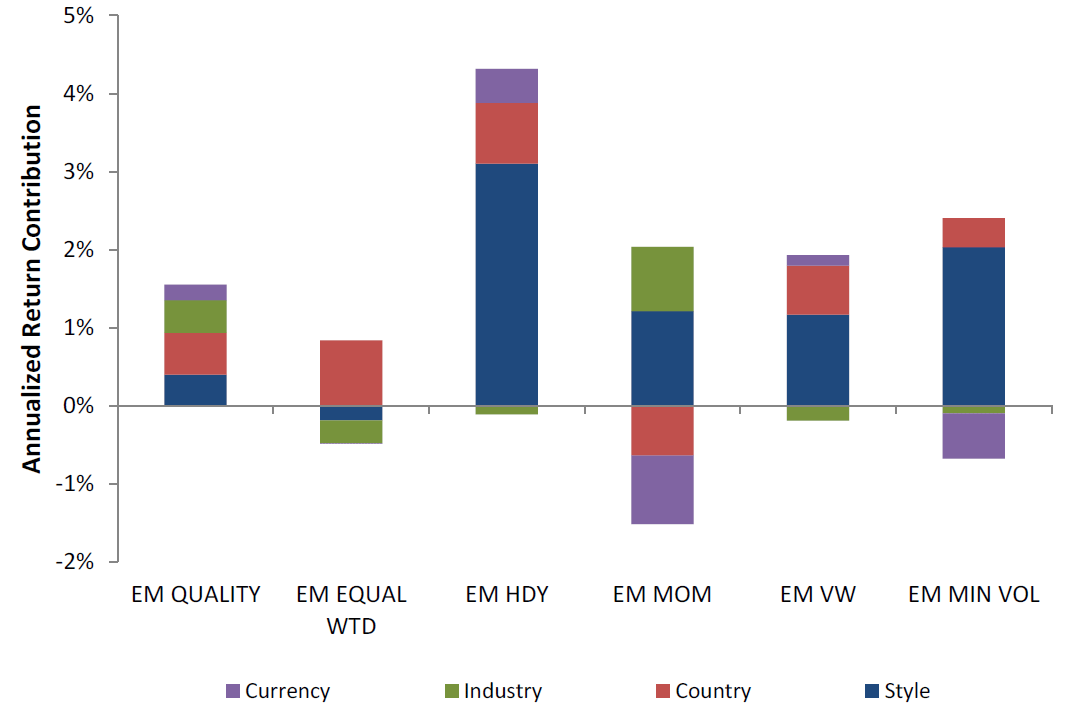
Factor indexes historically have generated premia in developed markets. Now, as global markets have become more correlated, investors are starting to seek additional sources of returns within emerging markets.
Among emerging markets, however, the country factor has historically been the main differentiating criterion in determining equity returns. While that pattern is still present, it has been shifting. Our research shows that the six fundamental factors identified in developed markets also outperformed the MSCI Emerging Markets Index over a 15-year period. The High Dividend Yield, Momentum and Value-Weighted indexes exhibited particularly strong performance.
The contribution of the main factor groups to the performance of the MSCI EM Factor Indexes can be seen below.
Annualized Active Return Contribution to MSCI EM Factor Indexes

This data demonstrate that factor investing through the MSCI factor indexes have the potential to be a powerful tool for investors seeking to add premia to broad emerging market beta. But how have these factors functioned in actual actively managed portfolios?
When MSCI studied returns from 63 emerging market funds, each with at least $100 million in assets under management, from December 1998 to June 2014, we found that as a group, active managers mostly harvested emerging market beta. However, when regressions were run on their monthly returns, they showed that High Dividend Yield and Momentum were significant contributors to performance, suggesting that managers had been harvesting systematic factors in their investment processes. Active managers might use MSCI’s full suite of factor indexes to seek additional premia based on value, low size, low volatility and quality.
The study showed that there is also an opportunity to combine factors.
The returns of the three MSCI EM factor indexes all performed well during the period studied—High Dividend Yield, Momentum and Value-Weighted—exhibited negative or low correlations to each other. Finally, combining factors in emerging markets provided investors with valuable diversification benefits effects by reducing variability in returns as well as turnover. These combinations can be used either by managers actively managing portfolios or via passively managed mixes for investors who have long time horizons and do not want to actively select or dynamically manage factor index-based portfolios.
